The history of the Sola Sound Tone Bender
Tone Bender builder David Main of D*A*M cleans up the fuzzy picture of these classic British stompboxes
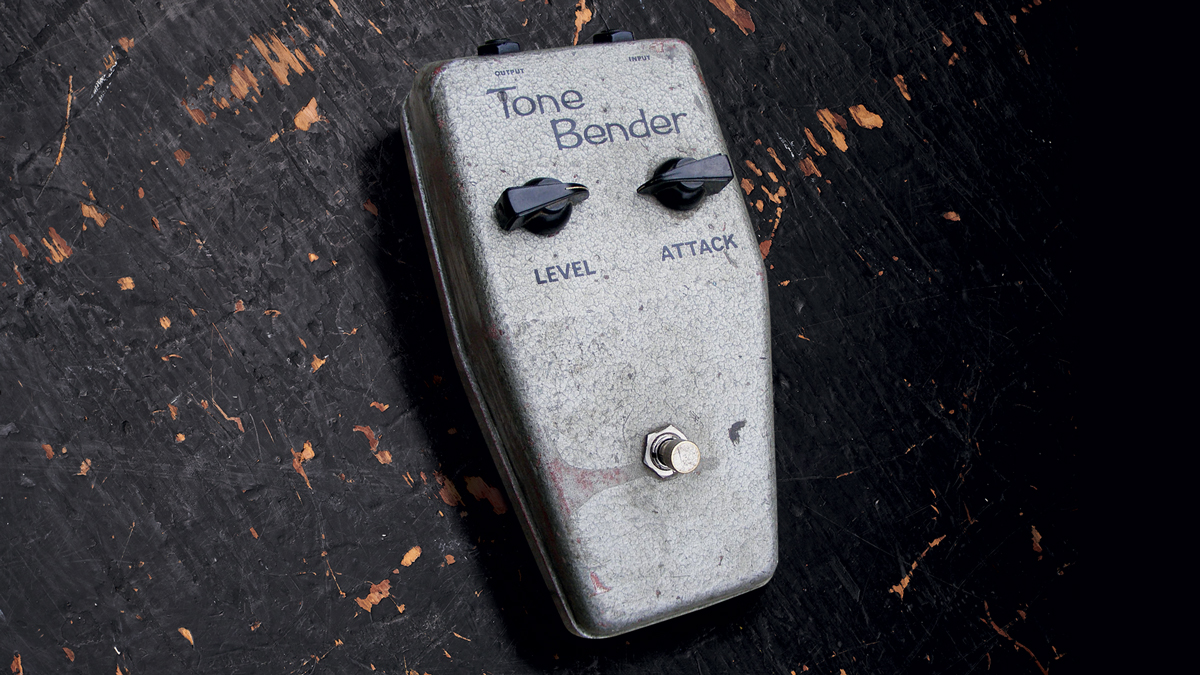
”The first Tone Bender is essentially a modified Maestro FZ-1 [Fuzz-Tone] and was designed by Gary Hurst in 1965,” says David Main. “When the Fuzz-Tone came out in ’62, they weren’t selling, but when (I Can’t Get No) Satisfaction came out in ’65, everybody wanted a fuzz pedal.
“The story goes that Vic Flick took his FZ-1 to Gary saying it didn’t sustain for long enough. Basically, the UK cold was shortening the note decay and making it sound spluttery – which some people like!
“Anything germanium is sensitive to temperature and the lower the voltage, the more sensitive it’s going to be. So Gary set about making a longer sustaining pedal and the difference is to do with the voltage: an FZ-1 is three volts, and a MK I is nine volts.
“The earliest ones have the classic cheese-wedge kind of shape, but are made of wood and were pretty fragile. Jeff Beck was using them from the start and destroyed a few, which probably led Gary to consider making them out of steel. When the Macari brothers got interested in the idea of making a commercial product out of it there were other names flying about, but they eventually settled on Tone Bender.”
Sola Sound Tone Bender MkI
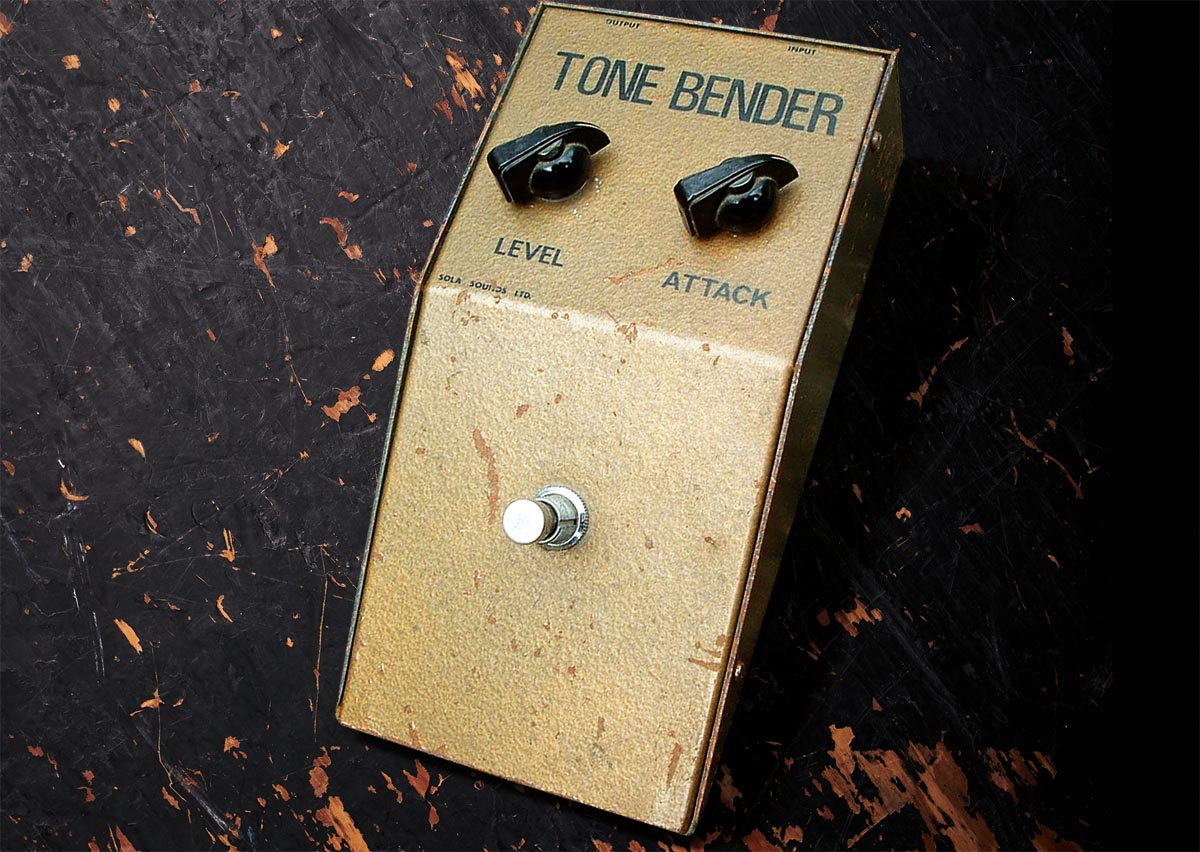
“The MK I sounds quite loud compared with the other Tone Benders, which is surprising considering it’s the first in the line. The units can differ a little bit and were super DIY.
“Gary was tuning them as he went along, and sometimes you can see where different value resistors have been chopped in and out. They were kind of voiced individually, but back in the day the parts were expensive – particularly transistors – and they didn’t want to waste anything.
“It’s a simple circuit that uses three [germanium] transistors: normally two Mullard OC75s and one Texas Instruments TI2G381. They’re made using Tufnol board with the components twisted together – point to point in its truest form!
All the latest guitar news, interviews, lessons, reviews, deals and more, direct to your inbox!
“Like the 1.5, there’s no [model] designation on the case. Back in the day, they weren’t referred to as ‘MK I’ or ‘1.5’; until the MK II Professional came along, they just called them Tone Benders.”
Sola Sound Tone Bender MkI.5
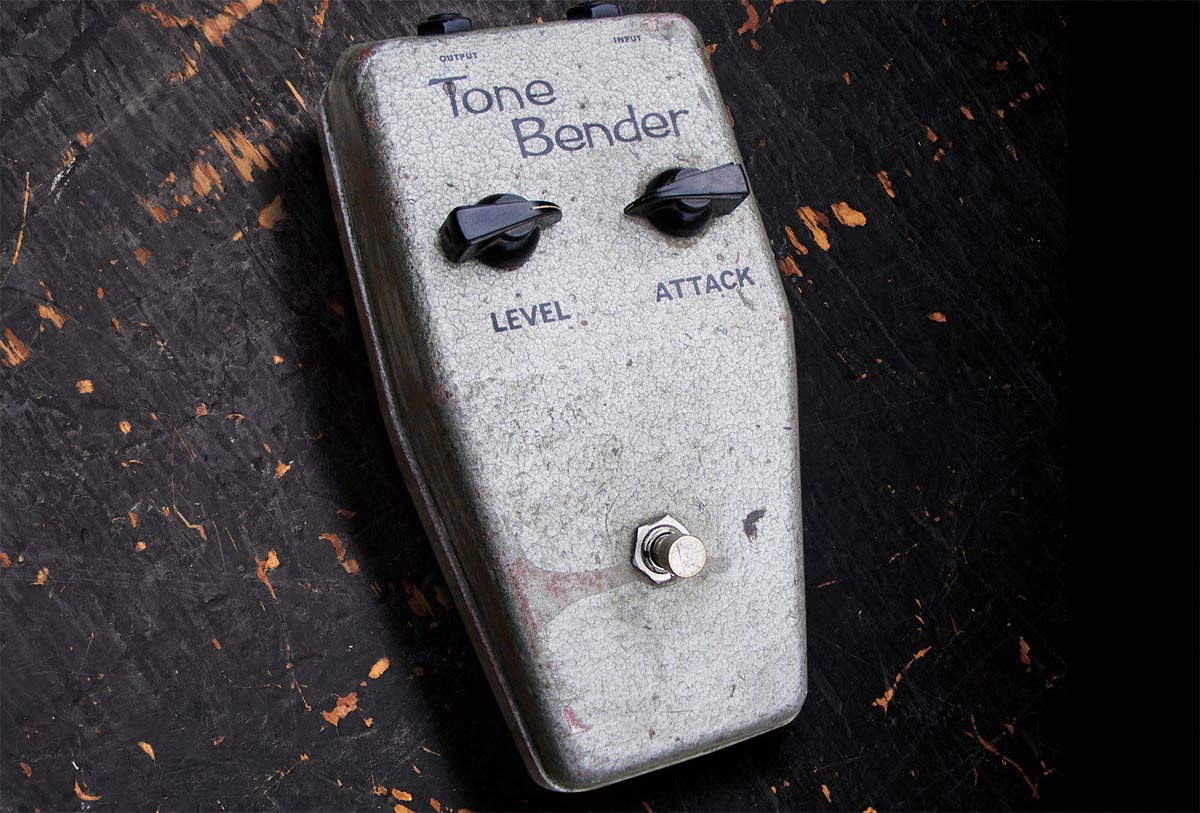
“The MK I was possibly only in production for a matter of months before the MK 1.5 came along. The earliest MK 1.5 I’ve seen is also from ’65. There was probably a crossover period. The MK I and MK 1.5 are quite different. The 1.5 is where the Fuzz Face [released in 1966] originated from.
“The component values are different and it’s biased differently, but it’s the same type of two-transistor circuit, albeit the 1.5 mostly uses OC75 transistors [early Fuzz Faces tend to use NKT275s].
“Early germanium Fuzz Faces are biased cold with the voltage between three and four volts, but a lot of the 1.5 versions are seven to nine volts. You get the full voltage of the battery in some cases.
“That gives it a really choppy, angry Stooges-like sound – not the typical smooth Fuzz Face sound. A lot of the 1.5s also have a really gated sound, which doesn’t give you much sustain.”
Sola Sound Tone Bender MkII
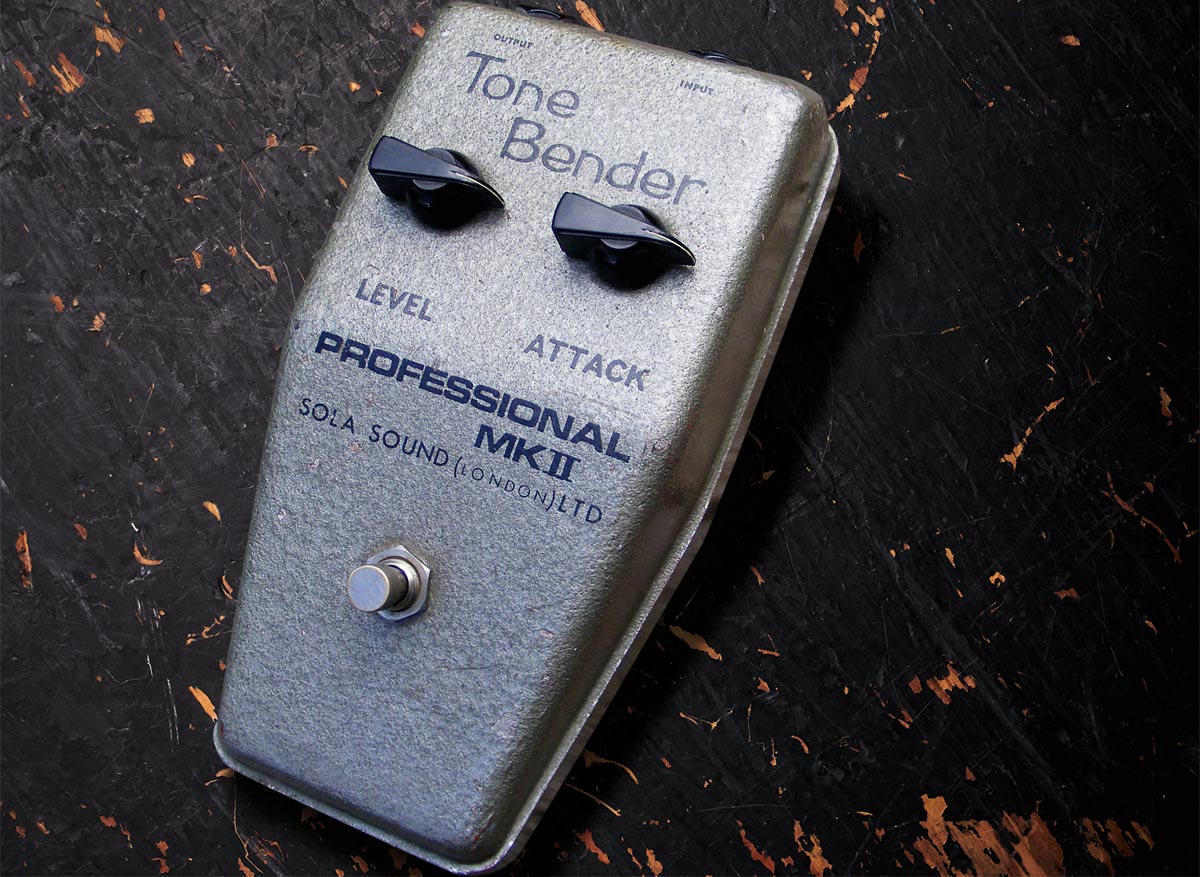
“[Appearing in around 1966], these pedals were branded for Sola Sound and Vox and have the first official version name, ‘Professional MK II’, screenprinted on them.
“The first MK IIs are modified 1.5s. The earliest ones have the same small circuit board, but the parts are just crammed in. They have an extra gain stage, so three transistors – usually OC75s and less commonly Impex S3-1Ts and Mullard OC81Ds – rather than two. It’s the same kind of two-transistor circuit as a 1.5 or a Fuzz Face but with an extra gain stage at the front-end.
“It’s a bit like taking a Fuzz Face and sticking a booster in front of it. It’s just slamming the front-end of the circuit to get more sustain – lots of gain and midrange. “In an original [MK II] advertisement it says, ‘Long 20-second sustain’ – and that’s what they were trying to achieve with the MK II model.”
Sola Sound Tone Bender Mk III & IV
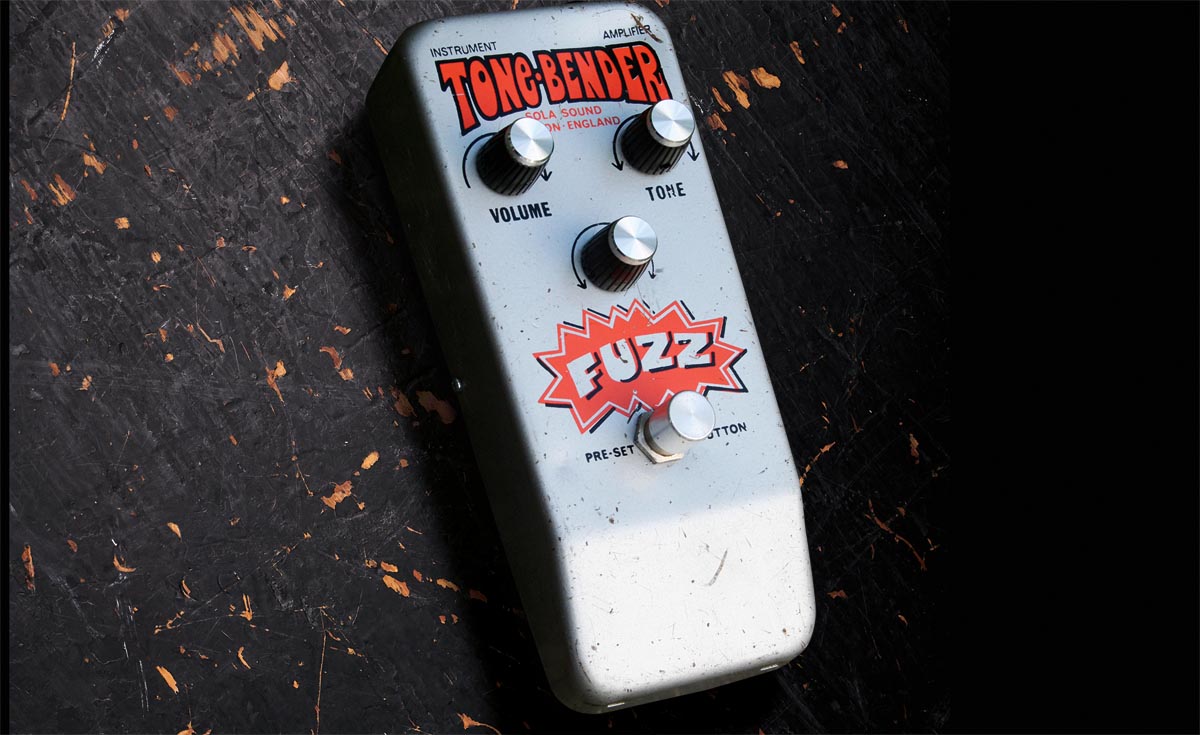
“MK IIIs were made as early as ’68, but they’re more commonly branded as a Vox pedal. The MK IIIs and IVs are essentially the same thing in terms of circuitry, but the MK IV has a slightly different [angled] case [as pictured] and that’s where they really got into OEM manufacturing, for other brands like Park and Carlsboro.
“By this point, they’re going for full-on mass production with a pressed case and printed circuit board. They use three transistors – manufactured by STC and generally unbranded – but it’s a totally different circuit to the MK II.
“It uses a Darlington [transistor] configuration, meaning the first two transistors in the circuit work as one, effectively making two low-gain devices into one really high-gain device. And then there’s a germanium diode in there to try to stabilise the shift you get with temperature fluctuations. Early MK IIIs can sound choppy, like the MK I.”
Rod Brakes is a music journalist with an expertise in guitars. Having spent many years at the coalface as a guitar dealer and tech, Rod's more recent work as a writer covering artists, industry pros and gear includes contributions for leading publications and websites such as Guitarist, Total Guitar, Guitar World, Guitar Player and MusicRadar in addition to specialist music books, blogs and social media. He is also a lifelong musician.

